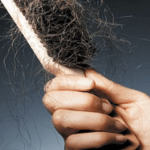Yeast infections are surprisingly common – affecting millions of people of all ages and genders each year.
While they’re often associated with vaginal infections, yeast infections can occur in many areas of the body, including the mouth, skin folds, nail beds, and even the digestive tract.
Whether you’re experiencing your first infection or struggling with recurring symptoms, understanding what causes yeast infections and how to treat them can make all the difference.
Also Read
In this guide, we’ll cover the causes, symptoms, risk factors, and safe treatment options for yeast infections – plus how to prevent them from coming back.
What Is a Yeast Infection?
A yeast infection, also known as candidiasis, occurs when there’s an overgrowth of Candida, a type of fungus that naturally lives in your body.
In healthy individuals, Candida is usually kept in balance by good bacteria. But when that balance is disrupted, yeast can multiply rapidly and lead to infection.
Did you know? There are over 20 different species of Candida, but the most common culprit is Candida albicans.
Where Can Yeast Infections Occur?
Yeast infections can show up in various parts of the body – particularly in warm, moist areas:
- Vagina (Vaginal Candidiasis)
- Mouth and throat (Oral Thrush)
- Underarms
- Skin folds (under the breasts, belly, groin)
- Nail beds
- Diaper area (in babies)
- Penis (less common, but possible in men)
What Causes a Yeast Infection?
There are several factors that can lead to a yeast overgrowth. Some of the most common include:
Internal Factors:
- Antibiotic use (kills good bacteria along with bad)
- Hormonal changes (menstruation, pregnancy, menopause)
- Uncontrolled diabetes
- Weakened immune system (HIV, cancer treatments)
- High estrogen levels from birth control or hormone therapy
External Triggers:
- Tight, synthetic clothing
- Poor hygiene or over-washing
- Use of scented soaps or douches
- Hot, humid environments
- Wearing wet clothes (e.g., swimsuits) for too long
Symptoms of a Yeast Infection
Symptoms vary depending on the type and location of infection, but here are some common signs:
Vaginal Yeast Infection:
- Intense itching and irritation
- Thick, white vaginal discharge (like cottage cheese)
- Redness and swelling of the vulva
- Pain during urination or sex
Oral Thrush:
- White patches on tongue, inner cheeks, or throat
- Soreness or burning in the mouth
- Difficulty swallowing
- Cracking at the corners of the mouth
Diaper Rash (in Babies):
- Bright red rash in the diaper area
- Raised, pimple-like bumps
- Irritability or fussiness
Skin Yeast Infections:
- Red, itchy, or burning rashes in skin folds
- Scaling or cracking
- Moist or “beefy” appearance
Is a Yeast Infection Contagious?
In most cases, yeast infections are not considered highly contagious. However, sexual activity can sometimes spread Candida, especially if one partner has an active infection.
Maintaining good hygiene and avoiding sexual contact during flare-ups is recommended.
Treatment Options for Yeast Infections
The good news? Yeast infections are usually easy to treat with proper care and attention.
1. Over-the-Counter Antifungal Treatments
Available in most drugstores, these include:
- Clotrimazole, Miconazole, Tioconazole
- Vaginal creams, suppositories, or external ointments
- Oral antifungal pills (e.g., Fluconazole) for more persistent cases
Tip: Always follow package directions and consult a doctor if symptoms don’t improve within 7 days.
2. Home Remedies & Natural Options
Some people prefer gentler or more natural approaches. These can include:
- Probiotics (oral supplements or vaginal capsules) to restore healthy bacteria
- Plain Greek yogurt applied topically or consumed
- Coconut oil or tea tree oil (antifungal properties – use with caution)
- Borax suppositories (only under medical supervision)
Warning: Not all natural remedies are safe for internal use. Always check with your healthcare provider.
3. Homeopathic Solutions Like Yeastrol
Yeastrol is a popular homeopathic spray used to relieve multiple symptoms of yeast overgrowth in both men and women. It contains 12 natural ingredients and is:
- Sprayed under the tongue
- Designed to treat itching, burning, discharge, and skin rashes
- Easy to use and available without a prescription
Prevention Tips: How to Avoid Future Infections
Prevention is just as important as treatment. Here’s how to keep Candida in check:
- Wear breathable, cotton underwear
- Avoid tight-fitting clothes in hot weather
- Stay dry: change out of wet clothes quickly
- Limit sugar intake (yeast thrives on sugar)
- Use unscented, gentle soaps
- Avoid douching or vaginal sprays
- Maintain a balanced diet with probiotics (yogurt, kefir, kombucha)
When to See a Doctor
While most yeast infections are mild and treatable at home, seek medical advice if you:
- Experience recurring infections (4+ times a year)
- Have severe symptoms or fever
- Are pregnant, diabetic, or immunocompromised
- Have discharge that is greenish, gray, or foul-smelling (may indicate another infection)
Yeast infections are common, treatable, and nothing to be ashamed of. The key is to recognize the signs early, use safe and effective treatments, and take preventive steps to reduce the chances of recurrence.
Whether you’re exploring over-the-counter options, natural remedies, or homeopathic sprays like Yeastrol, make sure to listen to your body and consult your healthcare provider if needed.
Staying informed is the first step to feeling better and more in control of your health.














